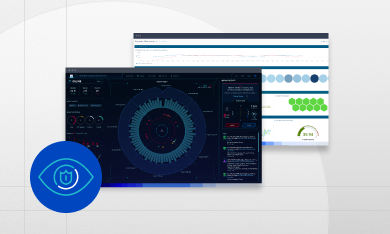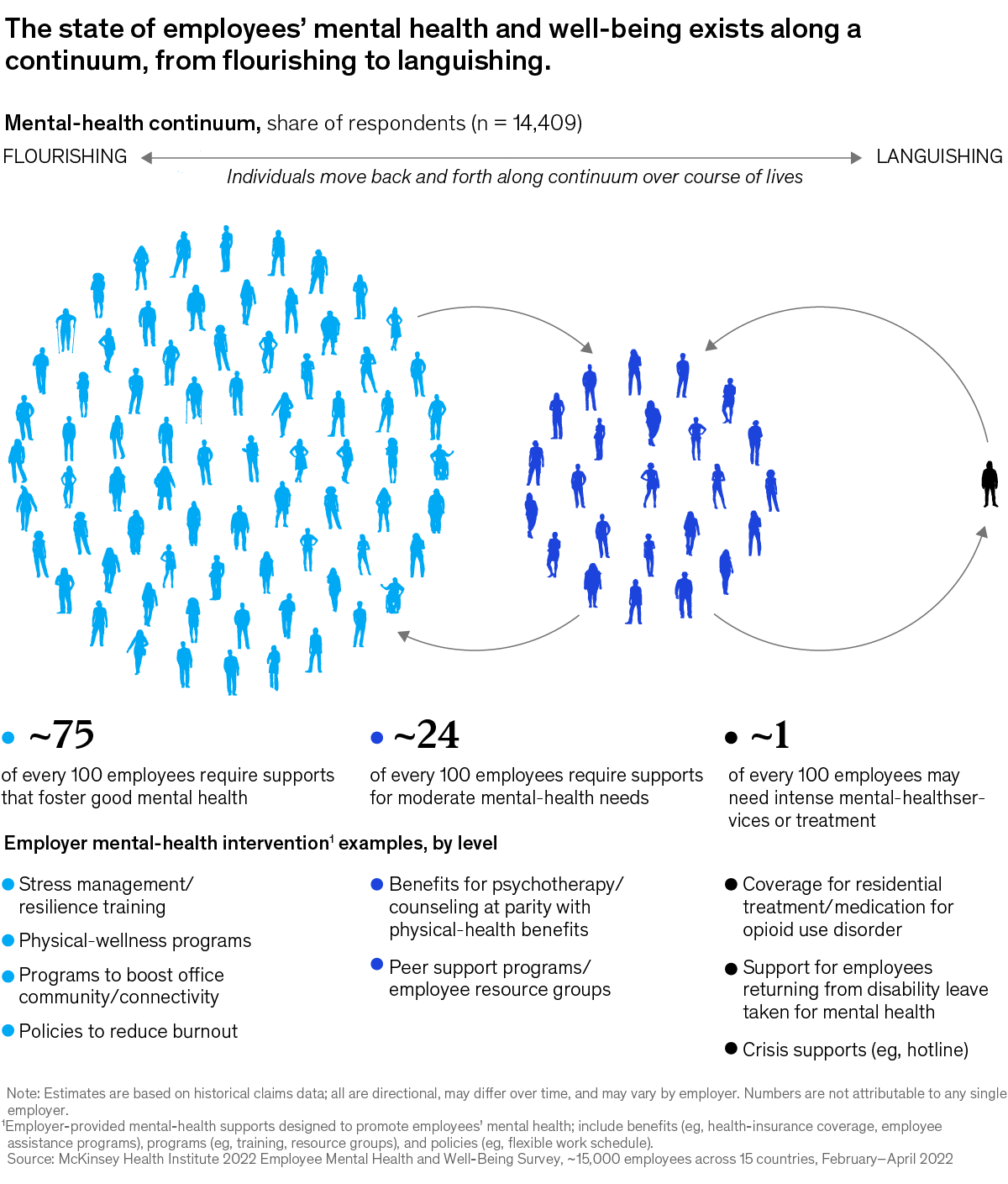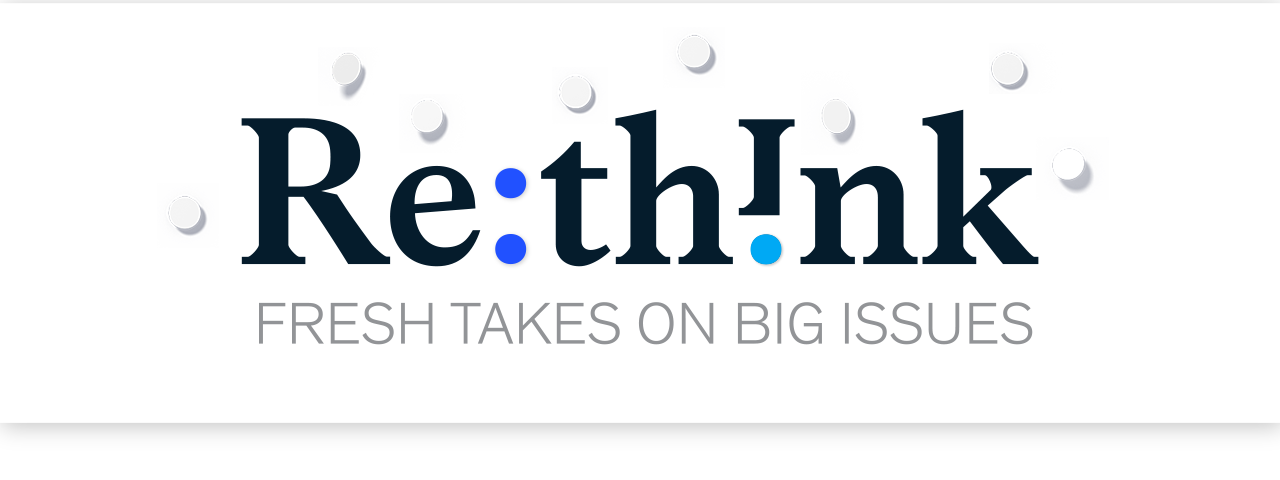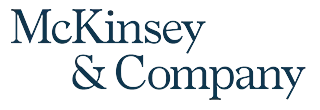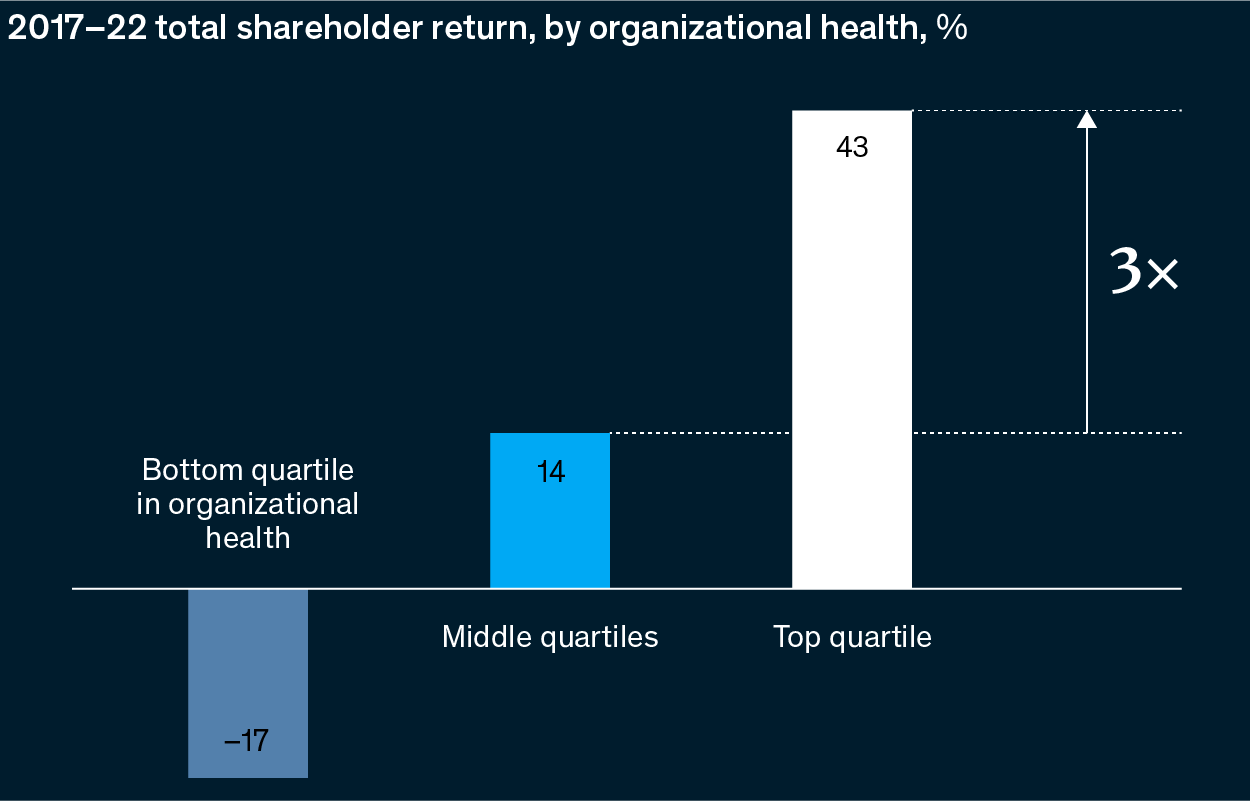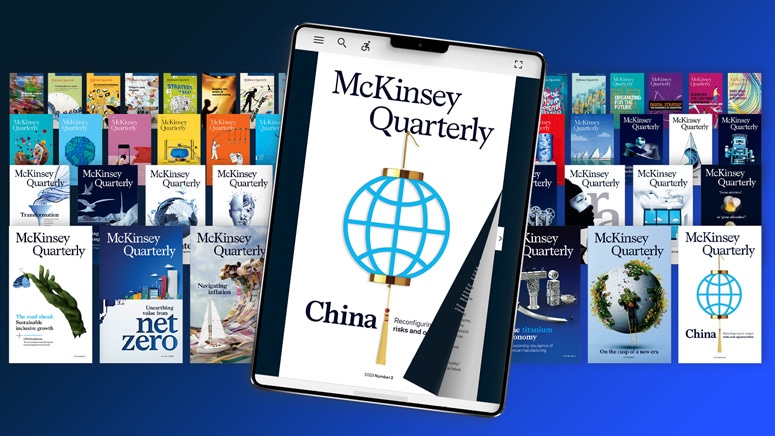Archives
- By thread 3680
-
By date
- June 2021 10
- July 2021 6
- August 2021 20
- September 2021 21
- October 2021 48
- November 2021 40
- December 2021 23
- January 2022 46
- February 2022 80
- March 2022 109
- April 2022 100
- May 2022 97
- June 2022 105
- July 2022 82
- August 2022 95
- September 2022 103
- October 2022 117
- November 2022 115
- December 2022 102
- January 2023 88
- February 2023 90
- March 2023 116
- April 2023 97
- May 2023 159
- June 2023 145
- July 2023 120
- August 2023 90
- September 2023 102
- October 2023 106
- November 2023 100
- December 2023 74
- January 2024 75
- February 2024 75
- March 2024 78
- April 2024 74
- May 2024 108
- June 2024 98
- July 2024 116
- August 2024 134
- September 2024 130
- October 2024 141
- November 2024 103
-
Embracing Safe Driving Behaviors for a Better Tomorrow
Embracing Safe Driving Behaviors for a Better Tomorrow
A critical aspect of fleet management that can impact everything from safety to costs and productivity.A critical aspect of fleet management that can impact everything from safety to costs and productivity.
Find Out What Makes Our Software Stand Out from the Crowd
Driver Performance
Refers to evaluating a driver's skills, behaviors, and effectiveness in carrying out their duties. Used to allocate drivers based on performance, ensuring that the most effective drivers are assigned to the most important routes or tasks.
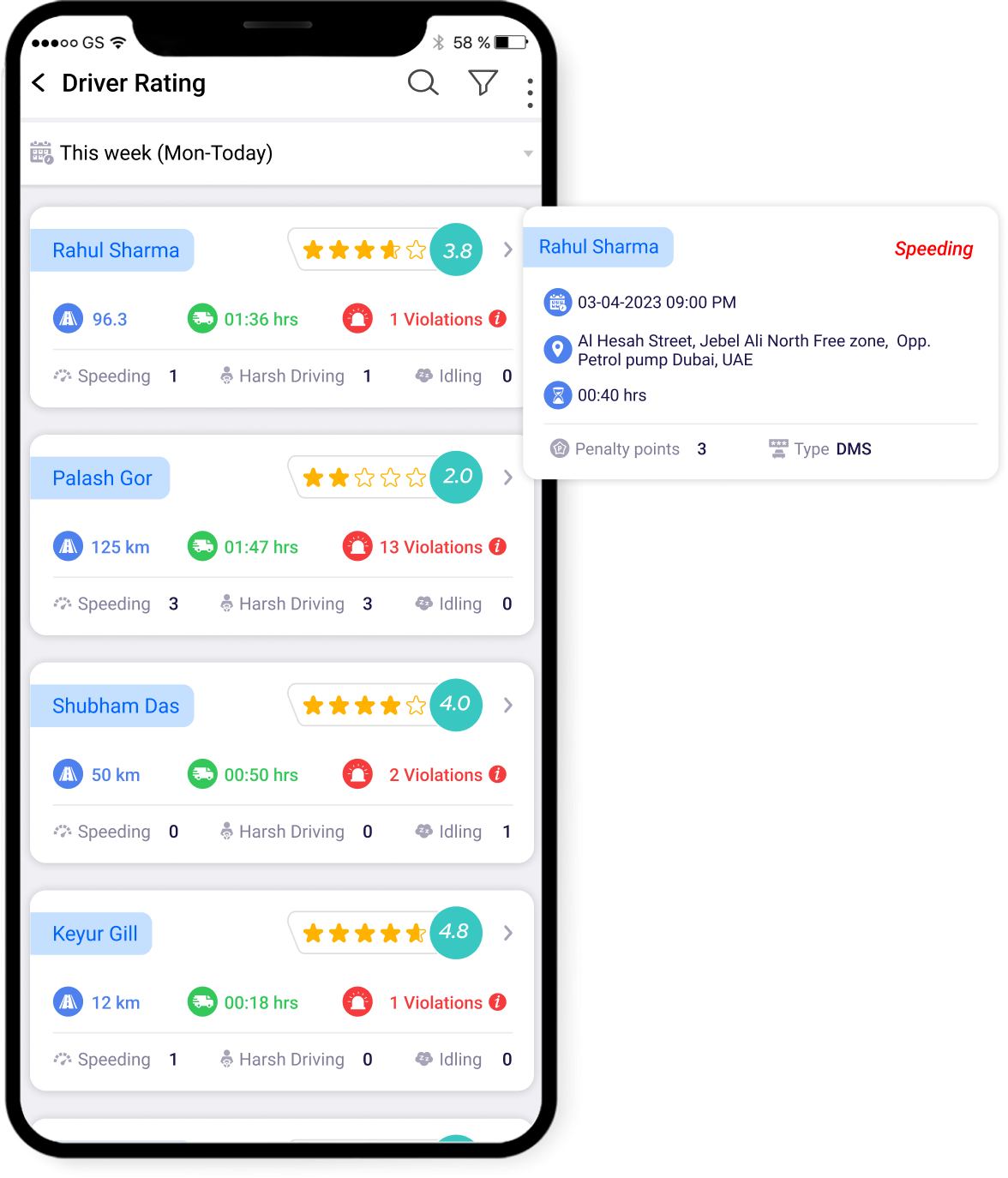
Driver scoring
Scoring provides a way for fleet managers to objectively assess driver performance and identify areas for improvement. Fleet managers can define their own scoring parameters to tailor assessments to their specific goals and priorities.
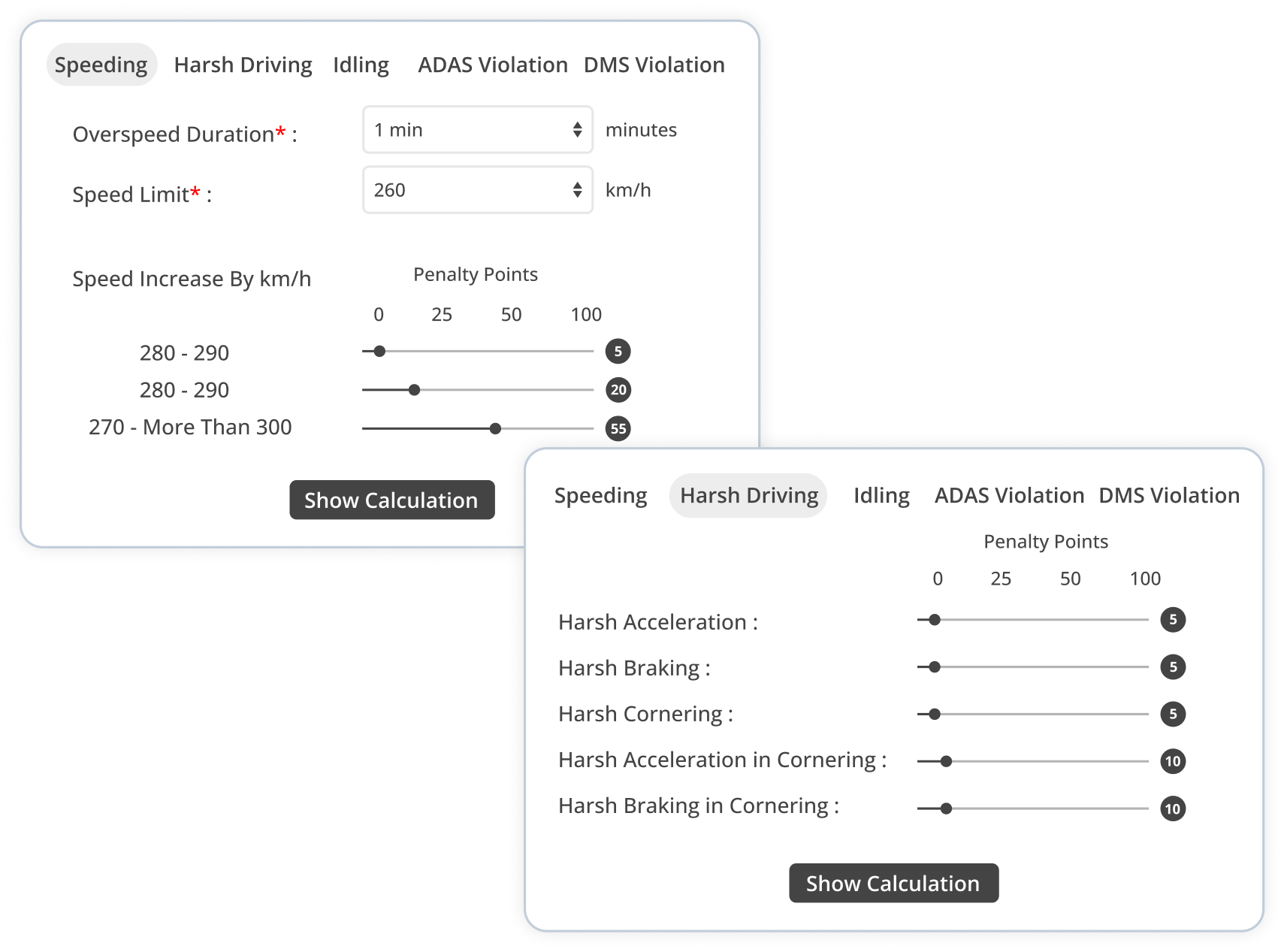
Alerts and Reports
- Violation Report
- Driver Rating
- Speeding Alerts
- Harsh Braking Alerts
Provides instances of unsafe behavior by drivers. It includes violations such as speeding, harsh braking, etc.
A report that provides an assessment of individual driver performance based on predefined criteria.
When a driver exceeds the predefined speed limit.
When a driver applies brakes abruptly or forcefully.

Empower your clients with driving behavior and help them save on costs


Uffizio Technologies Pvt. Ltd., 4th Floor, Metropolis, Opp. S.T Workshop, Valsad, Gujarat, 396001, India
by "Sunny Thakur" <sunny.thakur@uffizio.com> - 12:30 - 25 May 2023 -
K–12 schools in the US must spend stimulus funds soon. Can districts help students succeed?
On Point
Top priorities for US schools
by "McKinsey On Point" <publishing@email.mckinsey.com> - 12:15 - 25 May 2023 -
Hi
Hi, I wanted to reach out because I have an Audit of your website that reports on the key areas that Google identifies as the main reasons you're probably missing out on a lot of leads. Are you the right person to send this report with no cost or obligation? If you are, please reply to this email and I'll send it over to you. Yours Sincerely Martin Clark ---------------------------------------------------------- Note:-If you are not interested, kindly respond with "NO"
by "Martin Clark" <admin@crowdfire.com> - 11:17 - 24 May 2023 -
Sumo Logic named a Challenger in the Gartner APM and Observability MQ
Sumo Logic
Gartner MQ recognizes Sumo Logic...again

A single source of truth for analytics is the single biggest reason to switch to Sumo Logic.
Sumo Logic is absolutely thrilled (and honored) to be named a Challenger in the 2022 Gartner Magic Quadrant for APM and Observability. In a market estimated to grow to $8.9B by 2026, we are poised to maintain leadership in this field moving forward.
Read the report to learn why Sumo Logic was named a Challenger, about the APM and observability evaluation criteria, and the strengths of Sumo Logic.
While we’re on the subject, Sumo Logic was also named a Visionary in the 2022 Gartner Magic Quadrant for Security Information and Event Management (SIEM). Only five companies have earned a place on both of these prestigious rankings. To modernize your DevOps and SecOps, choose Sumo Logic.
Learn more about Sumo Logic. The infinite power of log analytics. Start a conversation to discover if Sumo Logic is a good fit for your team.
Sumo Logic, Level 9, 64 York Street, Sydney, NSW 2000
© 2023 Sumo Logic, All rights reserved.Unsubscribe 


by "Sumo Logic" <marketing-info@sumologic.com> - 09:00 - 24 May 2023 -
How to revive US productivity
Get productive Brought to you by Liz Hilton Segel, chief client officer and managing partner, global industry practices, & Homayoun Hatami, managing partner, global client capabilities
What does it mean to be productive? In economics, productivity is the output per worker for each hour they work, such as the number of lattes a barista makes in an hour. More broadly, it can also be viewed as “doing more with less,” according to McKinsey senior partner Olivia White. In a new episode of The McKinsey Podcast, she and partner Charles Atkins discuss McKinsey Global Institute’s recent report, Rekindling US productivity for a new era, and explore why boosting US productivity is crucial to confronting current workforce shortages, debt, inflation, and the energy transition. Tune in to see which US states, cities, and industries are the most productive, and what companies can do to lead the US to more prosperity.
Quote of the day
Chart of the day
ALSO NEW
— Edited by Joyce Yoo, editor, New York
Share these insights
Did you enjoy this newsletter? Forward it to colleagues and friends so they can subscribe too. Was this issue forwarded to you? Sign up for it and sample our 40+ other free email subscriptions here.
This email contains information about McKinsey's research, insights, services, or events. By opening our emails or clicking on links, you agree to our use of cookies and web tracking technology. For more information on how we use and protect your information, please review our privacy policy.
You received this email because you subscribed to our McKinsey Global Institute alert list.
Copyright © 2023 | McKinsey & Company, 3 World Trade Center, 175 Greenwich Street, New York, NY 10007
by "McKinsey Daily Read" <publishing@email.mckinsey.com> - 06:28 - 24 May 2023 -
A fork in the road to net zero
Re:think
Net zero’s open question The United States is at an inflection point that could determine whether it meets its commitment to reach net-zero greenhouse-gas emissions by 2050. Fulfilling that ambition would mean achieving a more orderly energy transition in which emissions reductions rapidly put the country on a path closer to a 1.5°C global-warming scenario while balancing affordability, reliability, resilience, and security. This transformation would require new policies, market mechanisms, business models, and technologies to be developed and deployed at scale. There is considerable debate about whether it will be possible to do so by the target date.
An orderly transition would follow a natural sequencing. You would start with the decarbonization of the power sector because you need clean power to support the other sectors. Then you would take on transportation—electric vehicles (EVs) or long-haul transport—because much of the technology behind EVs is already becoming economically viable, and consumers increasingly want these vehicles.
After that, however, you get into the tougher segments, including the fossil fuels needed to heat buildings—typically natural gas in many parts of the United States. Those emissions are hard to abate because alternatives are further from economic viability. Another tougher segment is the production of cement, steel, and aluminum—energy-intensive industries that typically rely on fossil fuels to produce electricity.
Some business owners, typically in thin-margin, commoditized sectors, would have to be persuaded to make changes. Many owners may be unwilling to switch to different, more expensive technology, even if it’s carbon abating.
Then you get into sectors such as agriculture. From a technology perspective, you would push renewable-energy sources, such as wind or solar. But for that to work at scale, you would need to ensure that there are enough stable backup power resources—typically gas-fired plants—to support the variability of renewables. You would need to expand the power transmission network to accommodate more green energy. And, of course, coordinating county, city, and statewide rules for all 50 states, in addition to federal mandates, is difficult.
What’s more, all of this would have to be achieved while attending to the societal effects. You need to reduce carbon emissions in an affordable way while also paying attention to economic justice. This means that as lower-income consumers gain access to the new technologies, you are managing short-term supply chain fluctuations and maintaining energy security.“This decade will be critical: the technologies needed to decarbonize require immediate investment so that they can have a cumulative effect—and can be depreciated.”
Ideally, that’s what an orderly energy transition would look like. But some near-term challenges—including the war in Ukraine, high fuel costs, oil and gas supply chain disruptions, and elevated inflation—seem poised to lead the United States toward a more disorderly energy transition in which the country either fails to meet emissions goals or delays action and then rushes to catch up at considerably greater cost.
This has sparked what I see as a healthy debate about whether the country will achieve net-zero emissions by 2050. The general view is that making it happen would be very difficult. This decade will be critical: the technologies needed to decarbonize the power, energy, and other sectors require immediate investment so that they can have a cumulative effect—and can be depreciated—over the next 20 or 30 years.
On the flip side, some people say that it’s myopic to view the transition only in terms of the challenges, citing the power of innovation, as well as declining costs. Indeed, technology innovation could help. The clean-tech industry, for example, is making improvements in the quality and efficiency of new technologies faster than forecasted. Policy resources, such as the US Department of Energy’s “Energy Earthshots,” are helping to make these learning curves even faster.
Optimists also point out that consumers are increasingly willing to pay a green premium and that carbon offsets, carbon compliance, and voluntary markets are developing. They argue that people often underestimate society’s ability to innovate quickly. And with the 2022 Inflation Reduction Act and other recent measures, the United States seems to be indicating that climate technology will be a pillar of the economy. All of this is evidence that the country could make huge progress toward its 2050 goals.
But even if you believe that unlocking innovation will indeed spur progress over the next 15 years, the United States could still be looking at a somewhat disorderly transition.
What I find encouraging is that people are less likely than they were until only quite recently to say that the transition shouldn’t happen or that a push for a 2050 deadline is a waste of resources. There has been a change in mindset, particularly in the United States. Everybody I talk to and work with, such as clients and colleagues, believes in the need to head toward a net-zero world.
So the debate is really about how fast to move. Are people willing to pay a high cost for a rapid energy transition, or are they prepared to endure extended supply chain disruptions that increase the price of solar panels, battery cells, and control technologies for carbon management? Some people would rather wait another ten years because they think the transition will be too expensive in certain areas. The discussion almost always results in the same conclusion: the United States must get to net zero, even if it doesn’t get there by 2050.ABOUT THE AUTHOR
MORE FROM THIS AUTHOR
UP NEXTSteve Noble on how consumers react to sustainability labels
A study examined how well products labeled to highlight sustainability perform with customers. The results finally put data behind how much consumers value companies’ ESG efforts and claims.
This email contains information about McKinsey’s research, insights, services, or events. By opening our emails or clicking on links, you agree to our use of cookies and web tracking technology. For more information on how we use and protect your information, please review our privacy policy.
You received this email because you subscribed to our McKinsey Quarterly alert list.
Copyright © 2023 | McKinsey & Company, 3 World Trade Center, 175 Greenwich Street, New York, NY 10007
by "McKinsey Quarterly" <publishing@email.mckinsey.com> - 02:45 - 24 May 2023 -
Join us at Securex Expo South Africa and Experience the Future of Fleet Management
Join us at Securex Expo South Africa and Experience the Future of Fleet Management

Explore and witness the transformative power of our cutting-edge fleet management software. Experience seamless operations, optimized efficiency, and increased profitability like never before.
Don't miss this opportunity to propel your business to new heights.
Uffizio Technologies Pvt. Ltd., 4th Floor, Metropolis, Opp. S.T Workshop, Valsad, Gujarat, 396001, India
by "Sunny Thakur" <sunny.thakur@uffizio.com> - 07:30 - 24 May 2023 -
พบกับ Schneider Electric ในงาน Assembly & Automation Technology 2023
Schneider Electric
Industries of the Futureพบกับ Schneider Electric ในงาน Assembly & Automation Technology 2023เส้นทางสู่เทคโนโลยีและโซลูชั่นระบบอัตโนมัติครบวงจร ศูนย์กลางการเชื่อมต่อธุรกิจกับ นักอุตสาหกรรม ผู้ให้บริการเทคโนโลยีและโซลูชั่นระบบอัตโนมัติที่เกี่ยวข้อง ที่จะมาพบกันเพื่อรับสารประโยชน์มากมายและพบโอกาสในการสานสัมพันธ์ทางธุรกิจกันภายในงานเพื่อผลักดันธุรกิจให้มุ่งหน้าสู่ความเป็นเลิศด้านประสิทธิภาพ จากมุมมองความคิดใหม่ๆ และความรู้ภายในงาน
โอกาสพิเศษ! *ลงทะเบียนกับ Schneider Electric ตอนนี้ และเข้ามาเยี่ยมเราที่บูท Schneider Electric (8 H11 Hall 98) เพื่อรับของที่ระลึกภายในงาน (ด่วน! จำนวนจำกัด)
*การลงทะเบียนนี้เป็นการลงทะเบียนกับทาง Schneider Electric เพื่อรับของที่ระลึกที่บูท Schneider Electric ภายในงานเท่านั้น ท่านสามารถลงทะเบียนเพื่อเข้างานได้ที่หน้างานหรือเว็บไซต์งาน Assembly & Automation Technology 2023 วัน เวลา21 - 24 มิถุนายน 2566
วัน เวลา21 - 24 มิถุนายน 2566
10:00 -18:00 สถานที่ไบเทค, บางนา
สถานที่ไบเทค, บางนา
BITEC, BANGKOK+ Lifecycle Services From energy and sustainability consulting to optimizing the life cycle of your assets, we have services to meet your business needs. Schneider Electric
46 Rungrojthanakul Building. 1st, 10th, 11th Floor, Ratchadapisek Road. Huaykwang
Bangkok - 10310, Thailand
Phone +662 617 5555© 2023 Schneider Electric. All Rights Reserved. Schneider Electric is a trademark and the property of Schneider Electric SE, its subsidiaries and affiliated companies. All other trademarks are the property of their respective owners.
by "Schneider Electric" <reply@se.com> - 07:15 - 24 May 2023 -
Is wireless charging the future for electric vehicles? These corporate leaders think so.
On Point
Cutting the electric-vehicle cord Brought to you by Liz Hilton Segel, chief client officer and managing partner, global industry practices, & Homayoun Hatami, managing partner, global client capabilities
• Charging up. According to McKinsey research, America could require 1.2 million public EV chargers and 28 million private chargers—charging stations in homes, workplaces, and other private settings—by 2030. That translates to almost 20 times more chargers than the country currently has. To date, most EV drivers plug in to wired charging stations. But the future of charging could reside in wireless and automated charging solutions, which could make EV ownership more convenient, cost effective, and appealing for drivers and fleet operators.
• Wireless while you wait. Wireless and conductive automated charging, which juices a vehicle’s battery through its underbody, have promising applications for both businesses and consumers. Imagine taxis wirelessly charging up in line at a taxi stand or trucks seamlessly recharging while being loaded and unloaded. In an interview with McKinsey partners Shivika Sahdev and Florian Nägele, a corporate leader in the space shared that the availability of wireless charging could increase consumers’ interest in purchasing an EV by 68%. Learn more about the business implications of innovative charging technologies.
— Edited by Andrew Simon, senior editor, Seattle
This email contains information about McKinsey's research, insights, services, or events. By opening our emails or clicking on links, you agree to our use of cookies and web tracking technology. For more information on how we use and protect your information, please review our privacy policy.
You received this email because you subscribed to the On Point newsletter.
Copyright © 2023 | McKinsey & Company, 3 World Trade Center, 175 Greenwich Street, New York, NY 10007
by "McKinsey On Point" <publishing@email.mckinsey.com> - 12:34 - 24 May 2023 -
Watch Make it with Creative Cloud on demand.
Adobe
Explore fresh ideas, insights and technology with these sessions.
Experience limitless creativity.
Make it with Creative Cloud is available on demand, today.
Today’s creative challenges need innovative solutions. Watch Make it with Creative Cloud’s on-demand sessions to explore the creative tools and ideas shaping the future.
Session 1 – Ideate and Create
Explore creative applications like Adobe Illustrator and InDesign that help you take the seed of an idea and watch it come to life.
Session 2 – Super Powers
When it comes to creativity, the sky’s the limit with Adobe Photoshop, Substance and Adobe Stock on your side. Discover how 3D photography, virtual imaging and generative AI empowers creativity at scale.
Session 3 – Speed and Ease
Uncover how your team is able to work faster, creating and collaborating to keep up with content demands with Premiere Pro, Frame IO and Adobe Express.
Explore the sessionsCreativity for all.Adobe and the Adobe logo are either registered trademarks or trademarks of Adobe in the United States and/or other countries. This is not a comprehensive list of all Adobe trademarks. For a full list, refer to the Adobe List of Trademarks. All other trademarks are the property of their respective owners.
By clicking on some of the links in this email, you might be redirected to forms that will be pre-populated with your contact information.
This is a marketing email from Adobe Systems Software Ireland Limited, 4‑6 Riverwalk, Citywest Business Park, Dublin 24, Ireland.
Click here to unsubscribe or send an unsubscribe request to the postal address above. Please review the Adobe Privacy Policy:
Australia
New Zealand
Indonesia
Malaysia
Philippines
Vietnam
Singapore
India
Hong Kong
To ensure email delivery, add demand@info.adobe.com to your address book, contacts, or safe sender list.
If you have a privacy-related complaint, send it to: privacy@adobe.com
View in browser
by "Adobe" <demand@info.adobe.com> - 10:04 - 23 May 2023 -
Bad Google Review Deletion
Hi I am trying to get in touch with you regarding your negative or unwanted Google reviews. We remove negative and fake reviews permanently from Google, Facebook, Trustpilot, Glassdoor and many more platforms . There is NO UPFRONT PAYMENT to get started with our service. You will only pay after we remove the review. Please reply to this email for more information. Yours Sincerely James Burn ------------------------------------------------------- If you are not interested, kindly respond with a "NO"
by "James Burn" <info@yourwebsiteimpression.com> - 09:00 - 23 May 2023 -
How do you build resilience? Start with improving organizational health.
Five Fifty
Get your briefing Organizations with healthy, resilient behaviors are better able to withstand major disruptions—and they’re more profitable, say senior partners Dana Maor, Michael Park, Patrick Simon, and coauthor.
Share these insights
Did you enjoy this newsletter? Forward it to colleagues and friends so they can subscribe too. Was this issue forwarded to you? Sign up for it and sample our 40+ other free email subscriptions here.
This email contains information about McKinsey’s research, insights, services, or events. By opening our emails or clicking on links, you agree to our use of cookies and web tracking technology. For more information on how we use and protect your information, please review our privacy policy.
You received this email because you subscribed to our McKinsey Quarterly Five Fifty alert list.
Copyright © 2023 | McKinsey & Company, 3 World Trade Center, 175 Greenwich Street, New York, NY 10007
by "McKinsey Quarterly Five Fifty" <publishing@email.mckinsey.com> - 04:53 - 23 May 2023 -
Attention
Dear info@learn.odoo.comI write to enquire if your company can supply rice to war region
(Goma, in Congo Drc)
We shall pay upfront, before your supply.
Regards,
by "David moussavou" <david@server.com> - 11:42 - 23 May 2023 -
Building.. Apps!
Hi
Hope you doing well.
I am writing to present my proposal for the development of a professional and user-friendly app for your business.
We are offering.
1. Online Booking App
2. Health and Wellness Apps
3. Multi-vendor App
4. Business apps
5. Educational apps
6. Lifestyle apps
7. Entertainment apps
8. Training /Fitness Apps
9. Travel apps
10. Custom App Development (iPhone, Android, Apps…etc.)
Our goal is to create an intuitive and feature-rich app that enhances user experience, increases customer engagement, and improves operational efficiency.
Warm Regards,
Jerry
India
by "Jerry" <kobitajakila@hotmail.com> - 08:15 - 23 May 2023 -
More apps. More logs. One place to find answers fast.
New Relic
 Who made the rule that log management should be slow, painful, and expensive? It should be the complete opposite.
Who made the rule that log management should be slow, painful, and expensive? It should be the complete opposite.
Contact us today for a demo and gain a step-by-step understanding of how New Relic can help you:
- Move beyond traditional logging.
- Combine logs with APM and Kubernetes data.
- See logs in context, replacing multiple tools.
Request a demo Need help? Let's get in touch. 

 This email is sent from an account used for sending messages only. Please do not reply to this email to contact us—we will not get your response.
This email is sent from an account used for sending messages only. Please do not reply to this email to contact us—we will not get your response.View in browser
This email was sent to info@learn.odoo.com. Update your email preferences.For information about our privacy practices, see our Privacy Policy.
Need to contact New Relic? You can chat or call us at +44 20 3859 9190
Strand Bridge House, 138-142 Strand, London WC2R 1HH
© 2023 New Relic, Inc. All rights reserved. New Relic logo are trademarks of New Relic, Inc.
by "New Relic" <emeamarketing@newrelic.com> - 05:36 - 23 May 2023 -
What should CEOs know about generative AI?
On Point
Generative AI’s risks and essentials Brought to you by Liz Hilton Segel, chief client officer and managing partner, global industry practices, & Homayoun Hatami, managing partner, global client capabilities
• Create value. Many C-suite executives want to move ahead thoughtfully, intentionally, and quickly on generative AI. The technology can perform several functions, including classifying, editing, summarizing, answering questions, and drafting new content. These actions could create value by changing how activities get done across business functions and workflows, McKinsey senior partner Lareina Yee and coauthors share. For instance, a production assistant might use generative AI to create a highlight reel based on hours of event footage.
— Edited by Belinda Yu, editor, Atlanta
This email contains information about McKinsey's research, insights, services, or events. By opening our emails or clicking on links, you agree to our use of cookies and web tracking technology. For more information on how we use and protect your information, please review our privacy policy.
You received this email because you subscribed to the On Point newsletter.
Copyright © 2023 | McKinsey & Company, 3 World Trade Center, 175 Greenwich Street, New York, NY 10007
by "McKinsey On Point" <publishing@email.mckinsey.com> - 12:33 - 23 May 2023 -
Delete negative Google reviews
Hi I am trying to get in touch with you regarding your negative or unwanted Google reviews. We remove negative and fake reviews permanently from Google, Facebook, Trustpilot, Glassdoor and many more platforms . There is NO UPFRONT PAYMENT to get started with our service. You will only pay after we remove the review. Please reply to this email for more information. Yours Sincerely Larisa Wilson _________________________________________________________ If you are not interested, kindly respond with a "NO"
by "Larisa Wilson" <info@alternatebusiness.com> - 06:32 - 22 May 2023 -
Hi
Hi, My name is Ashley. I have an audit of your website that reports on the key areas that Google identifies as the main reasons. You are probably missing out on a lot of leads. Are you the right person to send this report to at no cost and no obligation? Please let me know, So I can share the report/analysis with you. Many Thanks Ashley King ------------------------------------------------------------ Note:-If you are not interested, kindly respond with "No"
by "Ashley King" <info@gameeight.com> - 02:44 - 22 May 2023 -
Shape-shifters: A leader’s guide to organizational change
Get organized Brought to you by Liz Hilton Segel, chief client officer and managing partner, global industry practices, & Homayoun Hatami, managing partner, global client capabilities
Organizations have been evolving continually since the first modern corporations arose centuries ago. In the past few years, however, they have been hit by more shocks than in the previous decades, forcing them to adapt and build resilience at a pace that few are prepared for. New technologies, major workplace transformations, vastly different employer–employee relationships, and an uncertain global environment are among the many pressing challenges that leaders need to confront—fast. To help you develop strategies for action, here’s a quick look at what’s happening in organizations right now.
Keep an eye on ten organizational shifts that pose both challenges and opportunities, suggest McKinsey senior partners Dana Maor and Patrick Simon and colleagues in our The State of Organizations 2023 report. For example, the right institutional capabilities are essential to achieve a competitive advantage, but only 5 percent of respondents to our global survey of more than 2,500 business leaders say that their companies have the capabilities they need. Just 25 percent of respondents believe that their leaders are engaged, passionate, and inspiring—attributes urgently needed to succeed amid volatility. But some organizations have forged promising new paths for themselves. Their strategies include a “bold vision,” “comprehensive investment in employees’ well-being,” and “measuring what you want to reinforce,” according to their leaders.
That’s the number of leadership shifts it may take to lead organizations in uncertain times. McKinsey senior partners Aaron De Smet and Arne Gast and their colleagues point to five fundamental changes for leaders to consider making to their mindsets and working styles. These involve “moving ‘beyond’ the current norm ‘to’ an evolved ambition that’s needed to lead thriving organizations in this new, disruptive era,” they say. For example, leaders may need to go beyond delivering profit to achieving impact: this involves moving from effecting incremental improvements to boldly pursuing a future that maximizes value for all stakeholders.
That’s from a participant at one of the many McKinsey Leadership Forums that we have conducted since 2006. Rising CEOs face a different world today than they did back then. A notable change that we’ve seen among leaders in recent years is a shift from a “command and control” mindset to one of supporting and enabling—which means focusing their energies on the tasks that only a CEO can do. “I try to control what I do and where I spend my time,” one CEO told us. “I don’t do a very good job of it. . . . But I do try to be deliberate about where I think I can have the most impact.”
University of Oxford professor Paulo Savaget doesn’t believe in the myth of the hero visionary. “The most successful leaders are not necessarily visionary,” he says in this McKinsey Author Talks interview. “They provide an environment where people can experiment, where they can test, where they can be flexible.” That includes nurturing unconventional approaches to problem solving, such as work-arounds—which, Savaget says, “are very powerful mechanisms for deviating from norms, from these rules that constrain us.” What Savaget calls “scrappy” organizations (“because they’re feisty, they’re resourceful, they operate in the margins of systems”) manage to beat obstacles by using inventive work-arounds: in one case, a healthcare organization piggybacked on a beverage maker’s distribution system to bring lifesaving medicines to remote areas. Work-arounds like this “allow you to deviate from a status quo that you consider undesirable and get things done effectively, in a very low-stakes way,” Savaget says.
‘The organization man’ of the 1950s—as described by journalist and historian William H. Whyte in his eponymous bestseller—was a business executive who conformed to a homogeneous corporate culture (even when it came to attire, which was typically a gray flannel suit). This executive would likely have been baffled by the imperatives for today’s leaders to implement strong diversity initiatives, satisfy a variety of employee preferences and expectations, and create happier workplaces. Organizations can help future leaders learn the skills it takes to achieve such goals, suggest McKinsey’s Tera Allas and Bill Schaninger. For example, training sessions on how to give and receive feedback could enable leaders to develop empathy for the people they lead.
Lead through organizational change.
— Edited by Rama Ramaswami, senior editor, New York
Share these insights
Did you enjoy this newsletter? Forward it to colleagues and friends so they can subscribe too. Was this issue forwarded to you? Sign up for it and sample our 40+ other free email subscriptions here.
This email contains information about McKinsey’s research, insights, services, or events. By opening our emails or clicking on links, you agree to our use of cookies and web tracking technology. For more information on how we use and protect your information, please review our privacy policy.
You received this email because you subscribed to the Leading Off newsletter.
Copyright © 2023 | McKinsey & Company, 3 World Trade Center, 175 Greenwich Street, New York, NY 10007
by "McKinsey Leading Off" <publishing@email.mckinsey.com> - 02:44 - 22 May 2023 -
Many of us spend too much time in meetings. Is a more efficient workday possible?
On Point
Three questions to guide meetings Brought to you by Liz Hilton Segel, chief client officer and managing partner, global industry practices, & Homayoun Hatami, managing partner, global client capabilities
• Aim to collaborate. While interacting might be easier than ever, value-creating collaboration isn’t, McKinsey senior partner Aaron De Smet and coauthors share. When meetings aren’t run well, decision making becomes slower and the quality of decisions suffers. Roughly six out of ten executives say that at least half the time they spend making decisions is ineffective, one McKinsey survey found. What’s more, when leaders try to resolve inefficient decision making, they rarely see the real issue: poor design and execution of collaborative interactions.
— Edited by Belinda Yu, editor, Atlanta
This email contains information about McKinsey's research, insights, services, or events. By opening our emails or clicking on links, you agree to our use of cookies and web tracking technology. For more information on how we use and protect your information, please review our privacy policy.
You received this email because you subscribed to the On Point newsletter.
Copyright © 2023 | McKinsey & Company, 3 World Trade Center, 175 Greenwich Street, New York, NY 10007
by "McKinsey On Point" <publishing@email.mckinsey.com> - 12:09 - 22 May 2023







